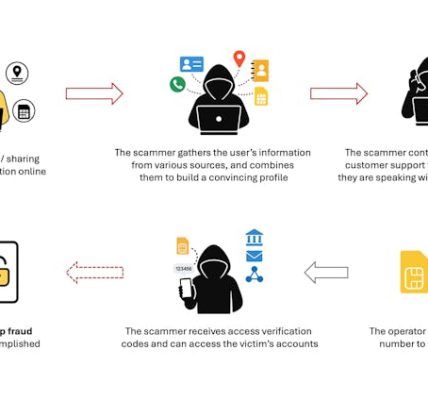How Denmark’s oysters are transforming foodies into citizen scientists
Lea Meilandt Mathisen, CC BY-NC-ND
This year 80 people put on their waders, grabbed buckets and quadrats (square metal frames), and splashed through the clear shallow waters. Once they reached one of the many sampling locations, marked by miniature floats, they threw their quadrats into the shallow water, ready to collect all the sea life that landed inside their quadrats.
No one had any idea what they might find living on the seabed until they reached into the water. Nearby, kids peered down at the seabed using underwater scopes, grandparents chuckled as they returned for a second forage.
This citizen science project combines coastal ecology and gastronomy. Our groups returned to the sorting stations to identify, count, weigh and measure each bucket of creatures and algae. A typical bucket might contain four living Pacific oysters, nine dead, a brush-clawed shore crab, four folded sea squirts and a handful of snails.
Then, we sat down together to eat a gourmet oyster dinner, prepared by Denmark’s top chefs. Organised by a shellfish gastrotourism association called Danmarks Skaldyrshovedstad, this oyster hunt (Østerjagten 2025) is a new annual festival held at the Salling Sund Bridge in the Danish Limfjorden, a 110-mile strait of water in northern Denmark.
Citizen scientists gather flora and fauna samples from the seafloor.
Lea Meilandt Mathisen, CC BY-NC-ND
The invasive Pacific oysters people had collected from the seabed then went on to be shucked and cooked. They were served au gratin, with wild flavour combinations, ranging from blueberry and blue cheese to shavings of prosciutto with strawberries and lime.
Most people told us they came along because of the quirkiness of this event, and the promise of gourmet food. Less than one in five people stated their interest in marine research as their reason for joining. Nobody attended the event just for the science.
As a coastal change researcher, this result was exciting – we were reaching an audience that might not normally engage. Even after participating, many people didn’t feel like citizen scientists. But when asked what they had learnt, most recalled facts about coastal ecology, as well as new ways to cook oysters.
A delicious plate of Pacific oysters served au gratin.
Lea Meilandt Mathisen, CC BY-NC-ND
Read more:
How citizen science is shaping international conservation
Eating aliens
Back to the basket sample contents. Pacific oyster, brush-clawed shore crab, folded sea squirts: none are native to the Limfjorden or Danish waters. So many people were shocked to find out that their baskets were full of invasive species – these “alien species” are non-native and can compete with the resident species for both food and space.
Despite an increase in the number of empty Pacific oysters shells we found this year compared to last (indicating more oyster deaths), temperatures are rising in this estuary system. This means that conditions are becoming more suitable for the Pacific oysters and the other invasive creatures, many of which originate in warmer waters.
Individual Pacific oysters were measured by hand.
Lea Meilandt Mathisen, CC BY-NC-ND
All oysters provide ecosystem services; improving water quality, forming new habitats and protecting coastlines from erosion by reducing wave energy. As Pacific oysters are bigger, rougher, tougher and much faster growing than native European oysters, they can have a greater impact on the environment.
This, however, is not necessarily a good thing. As Pacific oysters take over European oyster and blue mussel beds, birds which once fed on these species are left without vital food sources. The thick shells mean they have no predators once they reach a certain size. Beach goers can also be affected as the razor-sharp shells occupy previously sandy bathing areas.
Farming of the Pacific oyster has been banned in Denmark since 1998, yet despite this measure, Pacific oyster beds are now widespread and prevalent across Denmark’s estuaries. A single oyster can release between 50 and 200 million eggs during a spawning event each year meaning it is impossible to control them.
A young citizen scientist holds a small shore crab.
Lea Meilandt Mathisen, CC BY-NC-ND
While children were discovering the joy of sea squirts, other marine scientists and I could have tougher conversations with adults about climate change. We explained that warming temperatures are clearly visible in the here-and-now of local monitoring data.
The Limfjorden is made up of a series of fjords and islands in northern Denmark which link the North Sea to the Kattergat (the sea between Denmark and Sweden). This area is characterised by undisturbed coastlines and rolling hills, as well as some famous geological sites. It is a popular holiday destination for those that enjoy being in nature, some Danish hyggelig (comfort) and seafood.
But the Limfjorden is subject to numerous pressures: eutrophication (when extra nutrients in the water cause toxic algal blooms), changing climate, fishing, dumping of dredged materials and the arrival of invasive species. Its resilience to these may serve as an ecological bell weather for the rest of the world’s coasts.
Our event highlights how we’ll have to deal with environmental issues together. One feedback form still sits on my desk, the participant wrote in Danish: “Forskning er alle mands projekt og at det har effekt.” This translates to “research is everyone’s project and it has an effect”.
This edible approach offers a new way of communicating complex issues such as biodiversity and the introduction of alien species. Oyster hunt-style events such as this offer an excellent opportunity for scientists like us to provide some food for thought.
Don’t have time to read about climate change as much as you’d like?
Get a weekly roundup in your inbox instead. Every Wednesday, The Conversation’s environment editor writes Imagine, a short email that goes a little deeper into just one climate issue. Join the 45,000+ readers who’ve subscribed so far.
Camille Saurel receives funding from the European Union, Danish Government and research councils.
Pedro Seabra Freitas receives funding from the European Union, Danish Government and Research Councils, Aage V. Jensen Naturfond.
Dominique Townsend does not work for, consult, own shares in or receive funding from any company or organisation that would benefit from this article, and has disclosed no relevant affiliations beyond their academic appointment.



